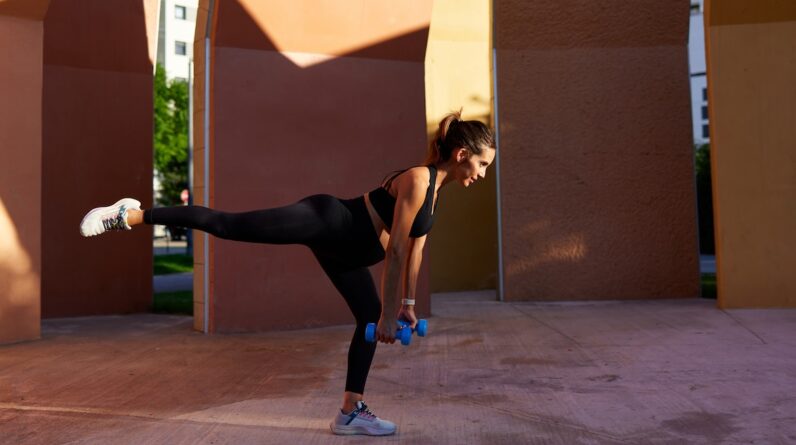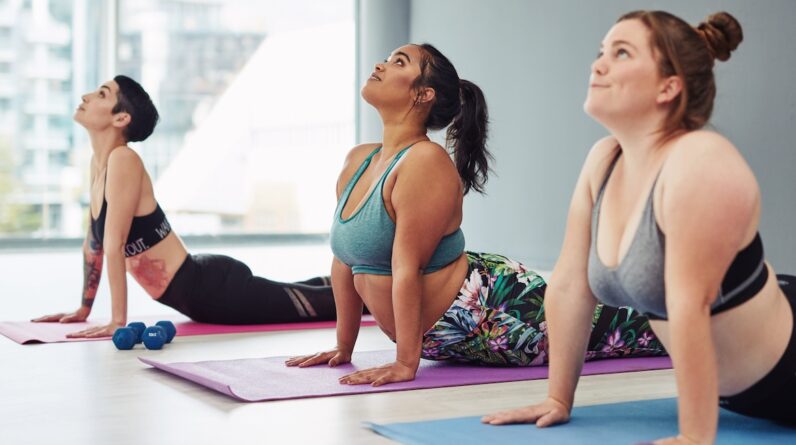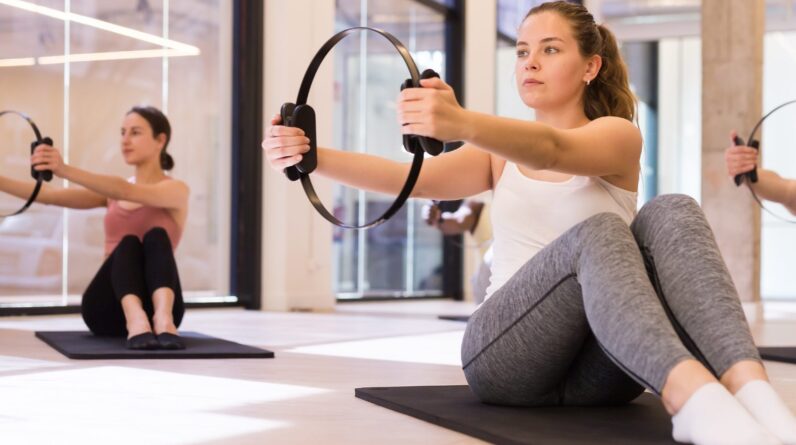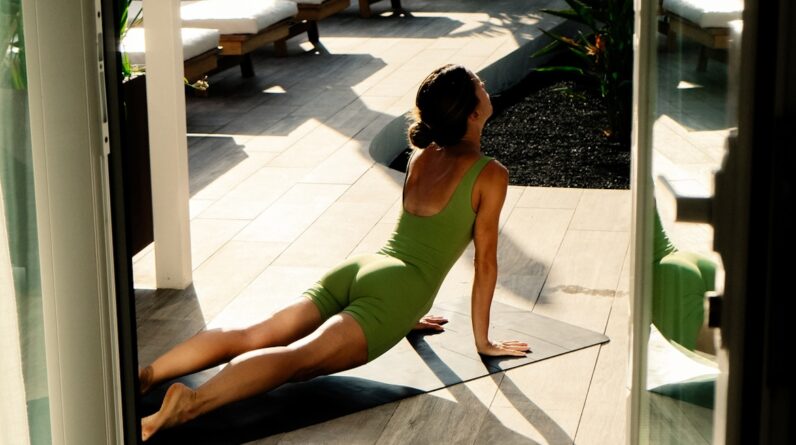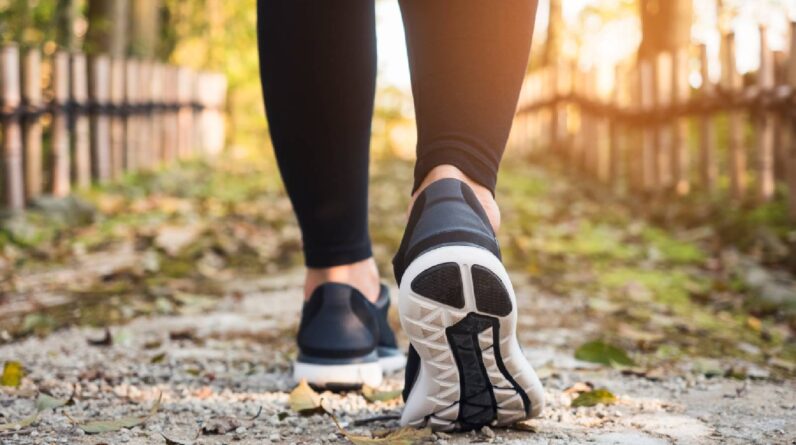
The goddess pose offers several benefits for your health. Here are the benefits of utkata konasana and how to do it.
The goddess pose is also known as utkata konasana. It is a standing yoga posture that challenges your body and mind. During this pose, you raise your arms to shoulder length and squat with your legs wide apart. This dynamic squat pose strengthens your legs, glutes, and core while opening your hips and chest. It also alleviates menstruation problems and hormonal disorders while also creating pelvic space, making pregnancy, labour, and delivery more comfortable. It comes with a lot of other health benefits and here’s how you can do the goddess pose or utkata konasana properly.
What is the goddess pose?
The goddess pose is beneficial for strengthening the legs, hips, and core. It also opens out the chest and shoulders, which can aid in improving balance and stability. It is also known to help relieve stress and tension and to have a grounding effect on the body and mind. As mentioned above, this pose is also known as utkata konasana.
The name “Utkata Konasana ” is derived from Sanskrit, and combines the words “Utkata,” which means powerful, and “Kon,” which means angle,” and “asana,” which implies seat or posture. This pose is also known as the extreme angle pose, representing feminine strength and power. This pose opens and stretches the quadriceps, hamstrings, knees, and ankles, strengthening the entire lower body. It is also considered a great practice for women in general.
Benefits of goddess pose or utkata konasana
Here are some of the potential benefits of goddess pose or utkata konasana.
1. Alleviates menstrual cramps
Yoga is a successful remedy for menstrual pain in women who have dysmenorrhea, found a 2019 study published in Complementary Therapies in Practice. Incorporating the goddess pose into your yoga routine can be an effective way to alleviate menstrual cramps. This pose also helps to resolve difficulties connected to menopause and irregular menstruation.

2. Strengthens your muscles
“When you hold the squat in the goddess pose, it helps tone your thighs, hips, and glutes. This helps build strength and stability in your lower body, making everyday activities like walking and climbing stairs easier. Moreover, opening the arms in the cactus opens up the chest, strengthening the arms, shoulders, neck, and upper back, says yoga expert Saurabh Bothra.

3. Stimulates your pelvis
This promotes the flow of Prana (energy in the Sanskrit language) and increases the functionality of the reproductive organ. Thus, pregnant ladies can benefit greatly from the goddess pose. It is an excellent pose to incorporate into prenatal yoga which will ease and promote delivery. However, more research is needed to back this claim.
4. Increases hip flexibility
Regular yoga practice may increase flexibility, balance, and overall body measurements, as per a study published in the International Journal of Yoga. “The wide stance and outward rotation in the goddess pose open up your hips, relieving the tightness that comes from sitting too much. Better hip flexibility means less discomfort and more freedom of movement,” says the expert.
5. Keeps stress at bay
Yoga is useful in relieving stress, anxiety, and depression, according to a study published in the International Journal of Preventive Medicine. Goddess pose improves mental focus and increases inner strength by demanding concentration and resilience to stress. Its grounding nature promotes emotional balance and stress reduction, resulting in a sensation of peace. Plus, the empowering position improves confidence and makes you feel more optimistic.
6. Boosts blood circulation
Squatting in the goddess pose or utkata konasana encourages blood flow to your lower body. This enhanced circulation helps muscles recover faster and supports overall heart health by ensuring nutrients and oxygen are efficiently delivered throughout your body. However, more research is needed to prove this claim.
7. Builds core stability
Core muscular stability refers to the strength and endurance of the flexor and extensor muscles, located deep inside the trunk. Regular yoga practice helps improve core muscular stability, as found in a study published in the International Journal of Experimental Research and Review. The goddess pose requires you to engage your core muscles. A stronger core supports your back, improves your balance, and helps you move more efficiently in daily life.
Also check out Ustrasana Yoga (Camel Pose)
How to do goddess pose or utkata konasana?
Here’s a step-by-step guide to performing the goddess pose or utkata konasana.
- Step 1: Stand on the ground or yoga mat and put your hand on your waist and your feet slightly wider than hip-width apart. Turn your toes out at a 45-degree angle and keep your feet rooted with the ground.
- Step 2: Without leaning forward at the hips, exhale and slowly bend your knees, but make sure your knees are aligned with your toes. Lower yourself as far as you feel comfortable into a squat position, keeping your chest upright and your back in a neutral position.
- Step 3: Place your arms out to the side at shoulder level, bending the elbows at a 90-degree angle to form a L shape. Keep your chest elevated and your fingers parted and pointing up.
- Step 4: Hold this position for 3 to 5 breaths, and inhale and exhale deeply. Concentrate on breathing to calm your body and sink deeper into the pose.
- Step 5: To come out of the pose, straighten your legs, bring your feet back together, and lower your arms to return to the starting position. Maintain your body alignment by ascending in the same direction you came down.

Are there any side effects of the goddess pose or utkata konasana?
While the goddess pose or utkata konasana is generally considered safe and beneficial, it is important to be mindful of potential side effects in certain conditions.
- If you have knee issues, ensure your knees stay aligned with your ankles to prevent strain.
- Those with tight hips might experience discomfort, so ease into the squat gradually.
- Keep your core engaged to support your spine to avoid lower back pain.
- Balance issues can be managed by practicing near a wall or using a chair for support.
Things to keep in mind!
Start slow and increase the duration gradually. By practicing it mindfully and being aware of your body’s limits, you can safely enjoy its numerous benefits while avoiding potential side effects. Always listen to your body and modify the pose as needed to ensure a safe and effective practice. Also, it is important to approach it slowly and with the assistance of a professional who can assure appropriate alignment and help you avoid injuries.


